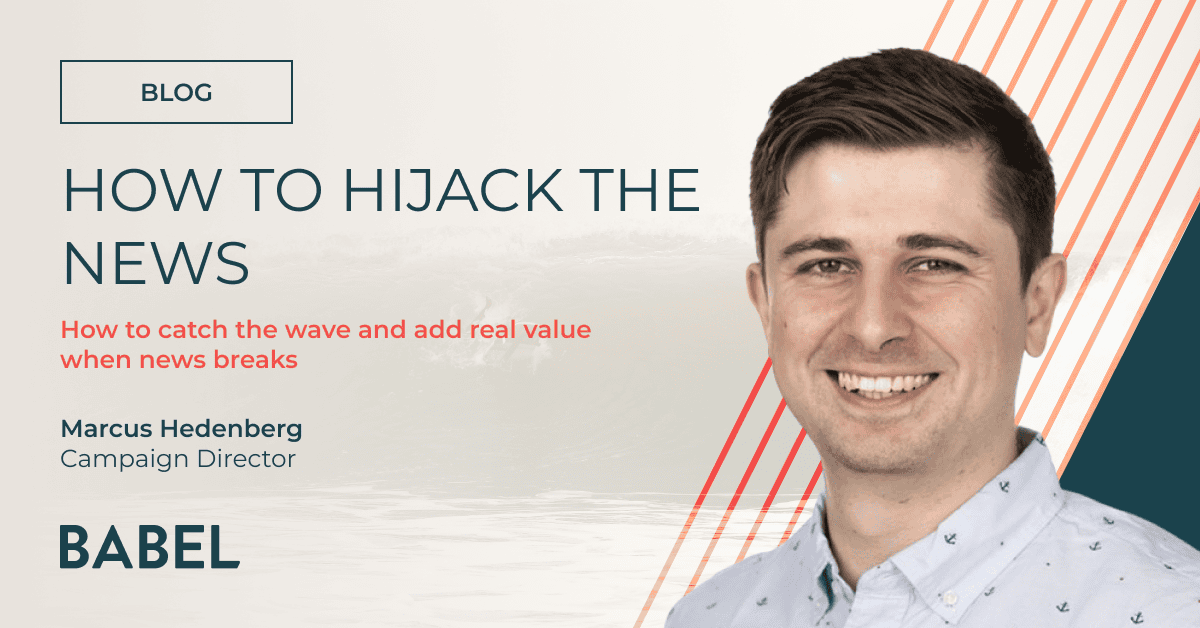
24-hour news and the rise of infosmog
There was a time when a PR could call an editor in the morning, before afternoon deadlines hit. Yet in today’s 24-hour news environment every minute is a deadline. This brings its own distinct challenges for the PR. There is no longer the buffer which used to exist when news content was bring printed; instead, content is now distributed in an instant.
But where did the 24-hour news cycle begin? Arguably, with CNN.
CNN was one of the first 24-hour news channels, with the Gulf War in 1991 marking the landmark shift in news reportage. CNN reporters were on the scene and able to cover events – even without film – when the bombardment of Baghdad began on January 16th. They were reporting as soon as the events started and continued to do so, around the clock, until the conflict finished on February 28th. In fact, this constant coverage was so effective, gripping, and influential, that the phrase ‘the CNN effect’ was eventually coined by US officials to describe the impact of real-time reporting. Twenty-four hour news had pushed to the front of the crowd and its impact marked a new era of broadcast.
Fast-forward to the present, and the 24-hour news cycle is the norm. There are bureaus from all major news outlets across the world, reporting on a glocal (global, yet local) scale. This means coverage comes in at all hours, across all subjects. While the BBC, CNN, Le Monde, Der Suddeutsche Zeitung and others offer reputable sources of 24-hour news, not all are so reliable.
The digital environment means an overwhelming volume of information and opinion is published constantly to a global audience. Richard Sambrook, Professor of Journalism and Director of the Centre for Journalism at Cardiff School of Journalism, Media and Cultural Studies, has been talking about and studying this for a number of years. He came up with the term ‘Infosmog’; published ‘news’ and information in the public domain that has no basis in fact.
The recent revelation about ‘fake news’ stories on Facebook caught the public eye, yet spreading misinformation is not a new thing. What is novel is the vast surplus of information available and sheer number of people that it reaches, resulting in greater public exposure to this ‘news’.
Unfortunately, as we have seen during two major events this year – the Brexit referendum and US election – fake news has the power to influence opinion and potentially impact voting choices. The volume of news stories – both real and fake – as well as the popularity of short articles and clickbait headlines, has reduced the amount of time people take to actually read an article. This in turn reduces the time they have to form an opinion on news stories and make a judgement on its authenticity. So, how does one write to inform truthfully and avoid being clouded out by the infosmog?
Infosmog does not touch the B2B market as much as other sectors, but similar questions remain: is that company pushing out press releases to cover their worrying financial situation? Relevant and timely news and information can easily be drowned out by no-substance shouting; in my short time in PR I’ve seen it often in the industry.
Although companies may be talking about implementing AI and other technologies to combat fake news, the task falls to us at Babel to make our content reliable and engaging so that it shines through and reaches its target audience. Fake news may not go away any time soon so in the meantime we will continue to provide relevant, factual information, and do out bit to combat the infosmog.






